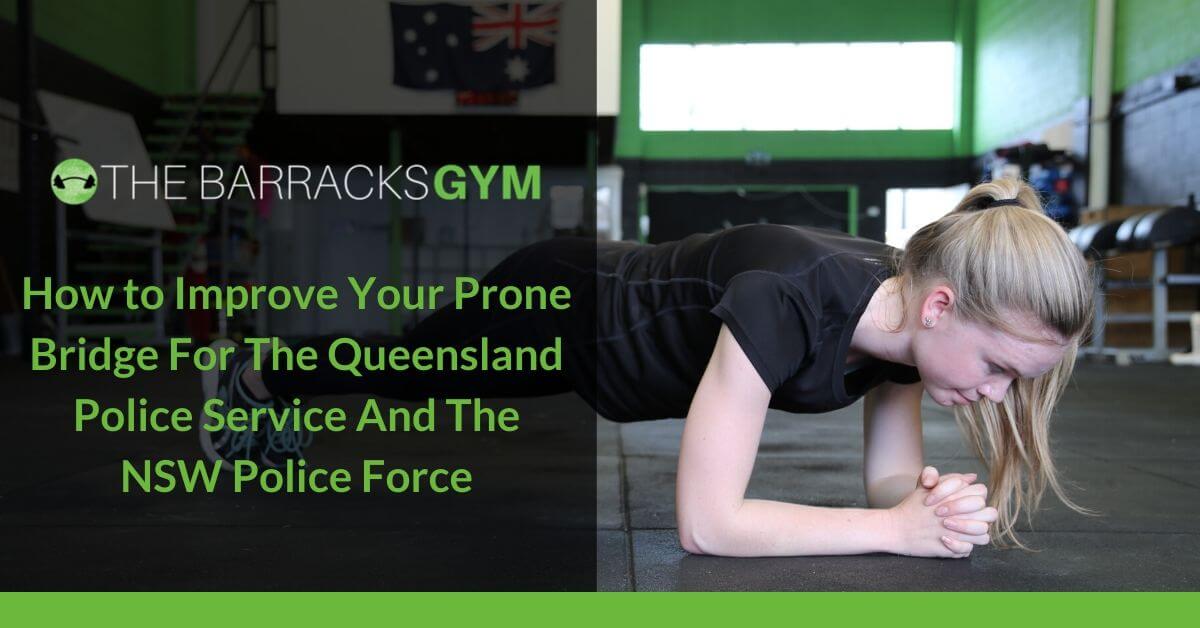How To Improve Your Prone Bridge For The Queensland Police Service And The NSW Police Force2/3/2020 There are several fitness tests that you need to take if you want to be a part of the Queensland Police Service or the NSW Police Force. One of these is the Prone Bridge test. Knowing about the test and putting in the right level of practice and training is a necessity if you are to pass. With that in mind, in this blog post, we are going to reveal everything you need to know about the Prone Bridge test, as well as providing you with some useful tips on how to complete it successfully. WHY IS THE PRONE BRIDGE TEST IMPORTANT? Also known as the hover or plank test, the prone bridge test is best placed to assess the muscular endurance of your abdominal muscles. Having a strong core is one thing, but for how long they can cope with load is especially vital when you are wearing your police duty belt to lower the chances of experiencing any injuries to your lower back. HOW TO PERFORM THE PRONE BRIDGE? You start in the bottom position of the push-up. Your hands will be shoulders width apart and your feet together. When the test begins, you will need to push up into the prone bridge (plank) position, also known as the top position of the push-up: you will be resting on your toes and hands. You must keep a straight line from your shoulders, right through to your hips, and your knees. To pass the test, you need to hold your position for 90 seconds as described above. The assessor will keep you informed of the timings. It may sound easy, but trust me, it is hard work. Getting your posture right is imperative. You will only have one chance to rectify your posture should it stray from the position expected. You will have to stop the test if there is any excessive shaking or change in your technique. Therefore, it is not merely about lasting the full 90 seconds. It is about making sure you see out the full 90 seconds in the correct form and without fading. You will have one attempt, which is why the right training and preparation are required. HOW TO IMPROVE YOUR PRONE BRIDGE? When it comes to endurance, may that be cardiovascular or muscular, one of the ways to improve it is to do that particular exercise more often progressively increasing the length of it. If you want to run a marathon but you can only run 2kms right now, you won't be trying to attempt that race with no preparation tomorrow. Instead, you'll try to find a training plan and build up the distance. Similarly, if you can only hold the prone bridge for 20s right now with the correct form, one way to get better at it is to work that number up to 90 seconds gradually. Implementing a core training plan designed to strengthen your midsection is one side of the equation; you also want to work on the endurance. In other words, you'd like to perform the prone bridge regularly and gradually increase for how long you hold it with the correct form. Besides including exercise in your workout plan that will strengthen your core is imperative. Think of deadlifts, ab wheel rollouts, burpees, just to name a few. HOW TO PASS THE PRONE BRIDGE TEST? Including core training in your exercise regime is imperative to work not only on your muscular strength but also endurance. If this is a first time for you and you are not sure how to attack both, ask for support from a personal trainer or a training facility with a speciality in preparing military and police applicants to pass their physical activity tests. There are also several different tips and techniques you can use throughout the test to put the odds in your favour.
WRAPPING UP So there you have it: everything you need to know about the Prone Bridge test for the Queensland Police Service and the NSW Police Force. If you feel you need expert input into how you can pass the prone bridge test, feel free to grab your 2 Week Trial at TBG now.
0 Comments
Leave a Reply. |
Most PopularTrusted PartnerWe work with the best service provider for Defence and First Responders.

Get SocialCategoriesArchives
January 2024
|
© COPYRIGHT 2024. ALL RIGHTS RESERVED.


 RSS Feed
RSS Feed